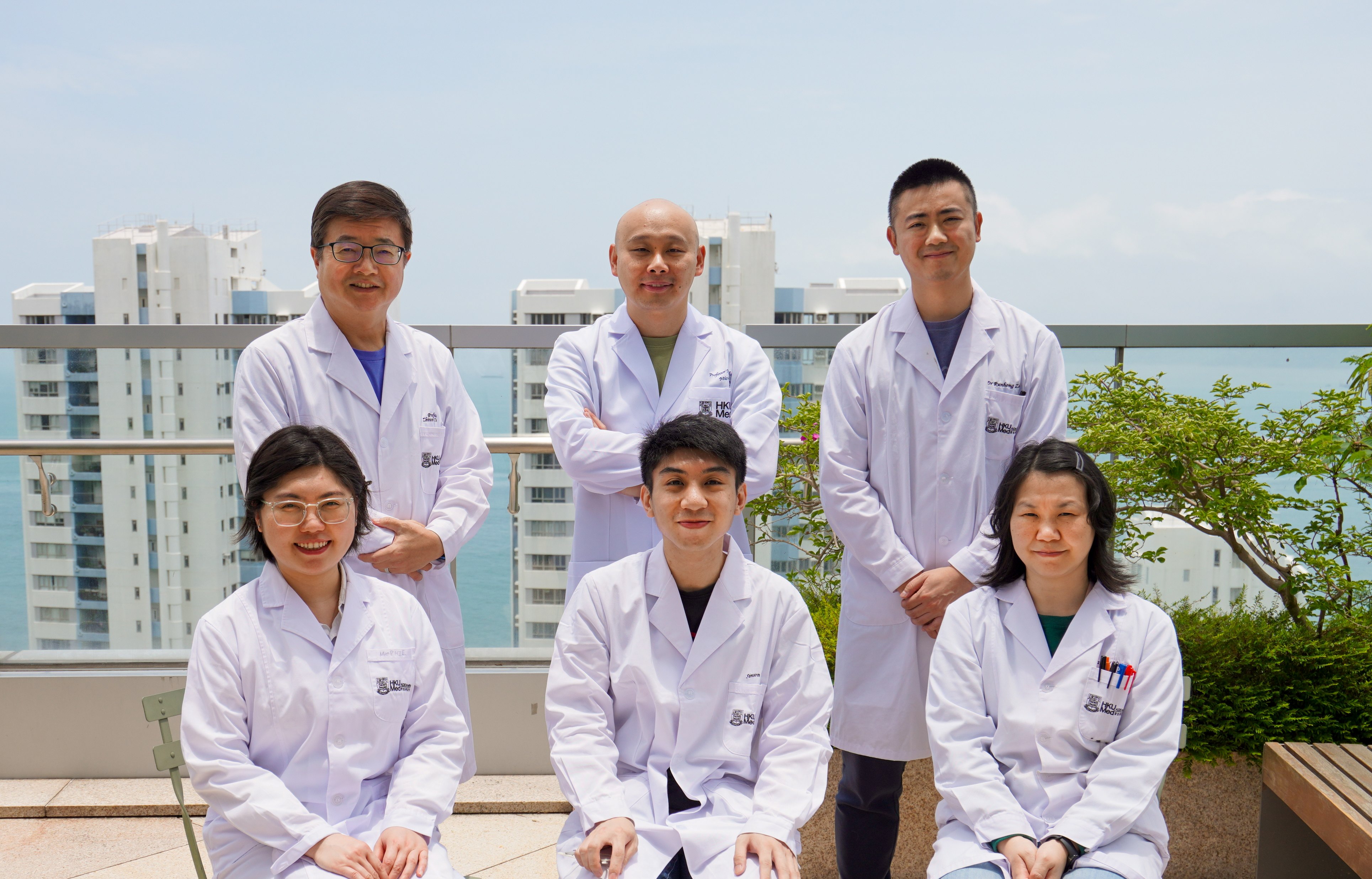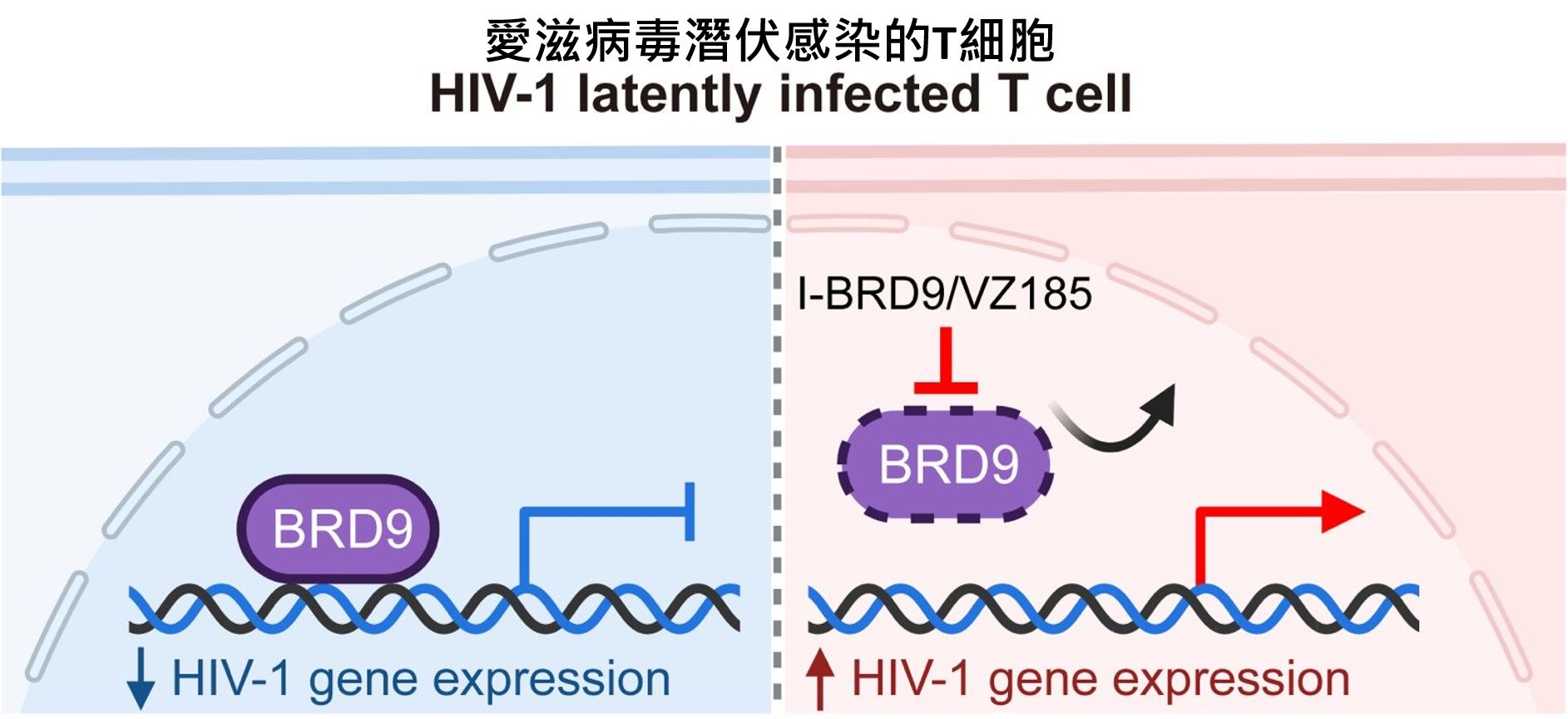11 June 2025
Over 40 million people worldwide are living with HIV-1, which continues to be a major global health challenge due to its ability to persist silently within immune cells, evading complete eradication. Researchers at LKS Faculty of Medicine, the University of Hong Kong (HKUMed), have identified a specific gene transcription factor, BRD9, as a potential key to unlocking the mechanisms behind HIV-1 latency. This could pave the way for AIDS to no longer be a largely incurable disease. The study has been published in the scientific journal The Proceedings of the National Academy of Sciences (PNAS) [link to publication].
Despite over four decades of research, AIDS remains a disease that is difficult to cure, primarily due to the highly variable nature of HIV-1 globally. Professor Chen Zhiwei, Suen Chi-Sun Professor in Clinical Science, Chair Professor of Immunology and Immunotherapy, Department of Microbiology, School of Clinical Medicine, HKUMed, and Director of the HKU AIDS Institute, explained, ‘The persistent presence of latent HIV-1 viruses in immune cells remains the greatest barrier to curing AIDS. Even with antiretroviral therapy (ART), many infected individuals still cannot achieve a complete recovery.’
Professor Chen continued, ‘By screening 280 epigenetic compounds, we have identified, for the first time, the BRD9 protein as a key player in reactivating latent HIV-1. BRD9 not only regulates viral gene expression but also competes with the HIV-1 Tat protein, modulating viral reactivation. This discovery offers new hope for the “Shock & Kill” strategy – aiming to activate hidden virus reservoirs and then eliminate them.’
This groundbreaking study reveals that when combined with another HIV-1 latency reversal agent (LRA), the BRD9 inhibitor demonstrates a significant synergistic effect in reactivating latent HIV-1 reservoir.
‘These findings deepen scientific knowledge of HIV latency and lay a crucial foundation for novel curative and precise approaches, offering hope to the millions of people living with HIV worldwide. The strong synergy observed between BRD9 inhibitors and existing LRAs suggests promising avenues for combination treatments to effectively activate and eradicate latent HIV,’ added Professor Chen.
About the research team
The research team is led by Professor Chu Hin, Gallant Ho Outstanding Young Professor, Associate Professor in the Department of Microbiology, School of Clinical Medicine, HKUMed; and Professor Chen Zhiwei, Suen Chi-Sun Professor in Clinical Science, Chair Professor of Immunology and Immunotherapy, Department of Microbiology, School of Clinical Medicine, HKUMed, and Director of the HKU AIDS Institute. The research work was conducted primarily by Dr Luk Tsz-Yat, PhD student, with assistance from several members of the research team, including Professor Yuen Kwok-Yung and Professor Jasper Chan Fuk-Woo of the Department of Microbiology, School of Clinical Medicine, HKUMed.
|
Background Despite over four decades of research, AIDS remains a challenging disease to cure. The primary pathogen is HIV, particularly the highly variable HIV-1, globally. The main obstacle to a cure is the persistence of HIV-1 within resting memory CD4+ T cells. These infected cells have a low gene replication rate, long lifespan and clonal expansion capability, making them hard to eliminate. Additionally, the latently infected cells maintain a low level of viral production, enabling them to evade recognition and immune response from cytotoxic T lymphocytes (CTL), macrophages and other immunosurveillance systems. The ‘Shock & Kill’ strategy combines LRA with antiretroviral treatment (ART). LRA is used to reactivate latent HIV, prompting infected cells to produce the virus, which can then be targeted and destroyed by ART. Although various LRAs have been developed to manipulate different epigenetic and signalling pathways, none of them can fully activate all latent HIV reservoirs. Clinical trials have shown that despite ART, people living with HIV (PLWH) still harbour replication-competent viral reservoirs. Identifying host factors that control HIV-1 latency and understanding their downstream pathways are critical for developing more effective ‘Shock & Kill’ treatments. Research Methods and Findings To discover novel drug targets, the research team screened 280 candidates from an epigenetic compound library for their capacity to reactivate latent HIV-1 in infected T cells. The results pinpointed a selective BRD9 inhibitor, I-BRD9, as a promising candidate for HIV-1 latency reversal. The team demonstrated that I-BRD9 and BRD9 degrader significantly induced HIV-1 latency reactivation in infected T cell models, including PBMCs isolated from PLWH on ART. Furthermore, the team revealed a strong synergistic effect between the combined inhibition of BRD9 and BRD4 in stimulating HIV-1 latency reversal. BRD4 was reported as one of the HIV-1 latency controlling factors and its inhibitor, JQ-1, was delineated as HIV-1 LRA. These results suggested that BRD9 inhibition can be applied together and synergize with other LRA to achieve a better effect on HIV-1 latency reactivation. Mechanistically, the research team found that BRD9 competes with HIV-1 Tat protein for binding to viral LTR promoter. This promoter region is essential in initiation of HIV-1 gene transcription and modulation of HIV-1 latency. Furthermore, with integrated CUT&RUN DNA sequencing and transcriptomics, the team revealed downstream cellular targets of BRD9, including ATAD2 and MTHFD2, which modulate HIV-1 latency. Together, findings of the study enhance the understanding on the regulatory mechanisms of HIV-1 latency and contribute to the development of future strategies essential for cure of PLWH. |
Media enquiries
Please contact LKS Faculty of Medicine of The University of Hong Kong by email (medmedia@hku.hk).




Follow HKUMed